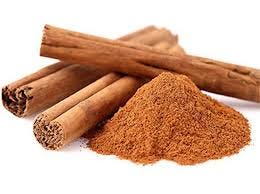UPDATED: December 28, 2024
Welcome to the Healthy Living Is Good Medicine Newsletter, a free publication covering a wide variety of health-related topics, with timely original articles intended to help people lead healthier and more fulfilling lives.
Conflict of interest disclosure: I sprinkle cinnamon on my plain, non-fat Greek yogurt almost daily.
Two Kinds of Cinnamon
Cinnamomum is a genus of plants with about 250 species that belong to the laurel family and contain aromatic oils in their leaves and bark. Cinnamon is a spice obtained from the inner bark of several tree species from that genus, but only a few species are grown commercially.
Consumers need to distinguish between Ceylon cinnamon and the others. Originating in Sri Lanka, C. verum is considered to be a true cinnamon, while the other, less expensive commercial species are referred to as cassias; Chinese cinnamon (C. cassia), Saigon cinnamon (C. loureiroi), Indonesian cinnamon (C. burmanni), and Malabar cinnamon (C. citriodorum).
Cinnamaldehyde contributes to cinnamon's sought-after flavor and aroma. The C. verum essential oils contain 50-60 percent cinnamaldehyde, while the cassias have up to 95 percent, giving them a stronger odor and more punchy taste. Most baking recipes use the term cinnamon to mean cassia. Otherwise, “Ceylon cinnamon” would be specified.
Ground Cinnamon’s Lead Contamination Problem
In 2023, the FDA initiated a recall of cinnamon-apple puree and applesauce products due to elevated lead levels from the cinnamon. There was a particular concern about the risk of lead toxicity in children. In 2024, the FDA targeted ground cinnamon products from discount retail stores and analyzed samples for lead and chromium content. Six distributors were found to have products with elevated lead levels, ranging up to 3.4 ppm. The FDA places the maximum level at 2.0 ppm. Prolonged exposure to the listed brands of ground cinnamon should be considered unsafe. On November 1, 2024, the FDA added yet another ground cinnamon product to their alert list.
A zero-tolerance policy isn't practical since lead occurs naturally in soil and water. Lead contamination comes from volcanic ash and its contamination from its previous use in paint, plumbing, and gasoline. Nearby industrial activities and roadway paving can also contribute to the amount of lead in the soil. Some spice suppliers may intentionally add lead chromate to enhance the color or increase the weight of their products. People are therefore cautioned to not buy loose spices while traveling abroad.
Some cassia sources, such as Costco, Litehouse, and McCormick, have said that their goal is to have heavy metals as close to zero as possible, but no company provided the thresholds that they consider acceptable. Of those brands, only McCormick specifically said that they test the products in their manufacturing plants for heavy metals. A recent article in Consumer Reports gives the testing results of 36 cinnamon powders, and details which ones are the best and which ones should be used sparingly.
Coumarin-Induced Hepatotoxicity
Sorry, that has to be a mouthful. I’ll explain. Recent research has cast cinnamon in another unfavorable light. Coumarins are a class of chemicals known as unsaturated lactones, which are found in a number of plants. In high enough concentrations in humans, coumarins can potentially cause liver damage. Coumarins are present in high concentrations in the cassias grown in China and Vietnam, which are typically the ones used in baked goods such as cinnamon buns. As if the sugar in Cinnabons wasn’t harmful enough, now we have to worry about the cinnamon, too.
The research led to a short-lived attempt to ban cinnamon buns by the European Union, sparking a bakers’ rebellion. While more research is needed to clarify the risk of cassia’s hepatotoxicity, just to be on the safe side it is currently recommended that no more than a teaspoon of cassia be eaten daily by people with a healthy liver. It should probably be avoided entirely by anyone with elevated liver enzymes on their blood tests.
Health Benefits
A systematic review of observational studies about the relationship between cinnamon, or its key components, such as eugenol, cinnamic acid, and cinnamaldehyde, suggest that cinnamon could improve memory and learning ability. However, clinical studies, to which more weight should be given, were less clear in their results. More studies would certainly need to be done before drawing any conclusions about brain health.
Other studies looking at cinnamon's impact on blood sugar and cholesterol levels have failed to find evidence for any significant medicinal or therapeutic effects. Sorry, cinnamon. I still love the way you taste, but I can’t claim that you’re a cure for anything. Such is life.
The Last Word
As a cinnamon lover, my plan is to stick to brands I trust but verify from time to time that they don’t contain unsafe levels of lead or other heavy metals. In any case, I won’t be consuming an excessive amount. For what it’s worth, despite their seductive aroma, sugar-laden cinnamon buns should be avoided if you’re at all concerned about your health. For another perspective on cinnamon’s safety, check out this article:
― ― ―
These Posts can be updated at any time. Please come back here again to find the most up-to-date information.
Find more articles about healthy living on my Substack Website:
Please share the Website Link with others via your social media accounts, and encourage the people who follow you to subscribe to the Newsletter. If we work together, we can help a lot more people become healthier.




